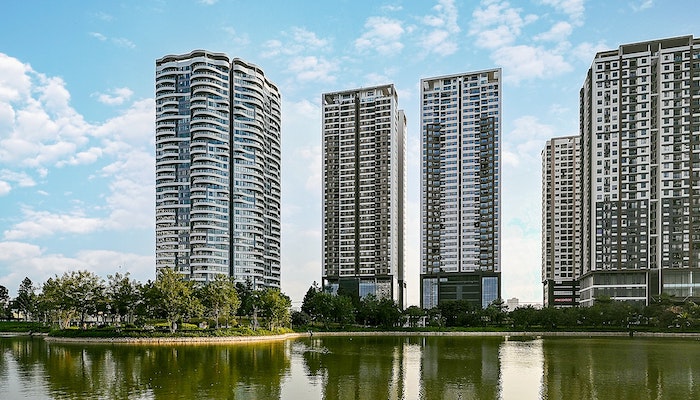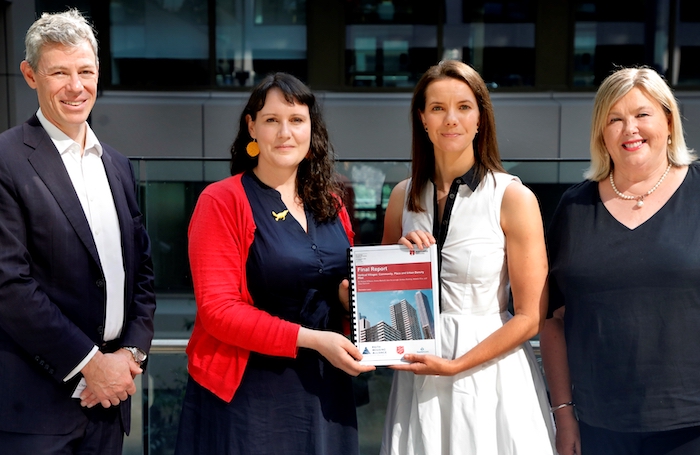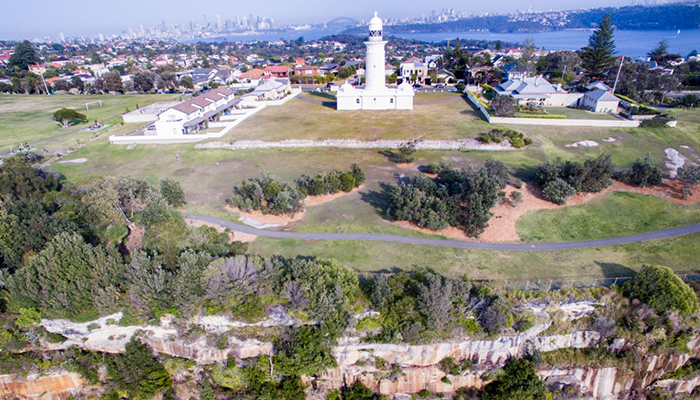With nearly half of Sydney’s apartments in high-density buildings of four or more storeys, helping residents connect with their neighbours could help many city residents overcome loneliness and isolation as we move on from pandemic lockdowns.

Here to stay: The Vertical Villages report shifts thinking around high-rise from transitional housing to permanent home
The ‘Vertical Villages’ project underway in Macquarie University’s School of Social Sciences has published a ‘toolkit’ designed to help residents and community organisations improve connections between people in high-density housing.
“We weren’t surprised to find that a lot of people living in cities feel a sense of isolation, and lockdowns and social restrictions during Covid have contributed to this isolation,” says the project spokesperson, urban geographer Dr Miriam Williams.
The project team surveyed 114 people living in high-density housing across five culturally diverse Sydney suburbs, conducted in-depth interviews with residents, urban designers, architects and community development experts and reviewed research around the topic.
The result is the Vertical Villages Report and Vertical Village Toolkit, launched last month, the latter filled with examples, suggestions and ideas for residents and community groups.
Permanent housing needing long-term solutions
“We often treat apartments as transitional housing, but our report shows that many more Australians now live in high-rise apartments permanently, so it’s important to support community life in both new and existing developments,” says Williams.

Leap of Faith: The Vertical Villages report and toolkit were launched by Hon Rose Jackson MLC (pictured, second from right) with BaptistCare CEO Charles Moore, Dr Miriam Williams and FHA CEO Rose Thomson.
“High rise developments can become ‘vertical villages’ when they have accessible green spaces and vibrant social infrastructure that helps connect people to each other, creating community wellbeing.”
The project recommends powerful ways to connect people through an ‘asset-based community development’ (ABCD) approach, where community connections tap into existing institutions, groups, places and skills – including people who can be ‘placemakers’ and ‘connectors’.
Technology can also open up many possibilities to expand local connections, including bridging language barriers.
Examples of usable spaces for holding community activities include parks and open spaces, schools, clubs and churches, she says.
The Vertical Villages Toolkit describes how a vibrant local cricket club was formed in the new Melbourne suburb of Aintree, with a local ‘placemaker’ first surveying residents to find out their preferred sports, then supporting local leaders to take over the program.
Repurposing spaces
Vertical Village ideas for community building will help guide new developments, but they can also be retrofitted into existing developments using creative placemaking, Williams says – and there are numerous examples in the Toolkit.

Working together: Activity-based connections like community gardens can bring people together despite language barriers
In one of these case studies, former City of Sydney Housing Liaison Officer Dominic Grenot refurbished uninviting, empty or unused or dangerous spaces in a high-rise development to make residents feel more welcome, using creative placemaking to create attractive and safe communal spaces.
Tables and chairs were refitted with chessboards, barbecues were installed, lighting improved and benches and seating set up near the site’s letterboxes to encourage community interaction.
The renewal project also installed noticeboards around the site, using these to invite residents to events and small gatherings in these renewed spaces.
“The biggest thing for me was around tenants needing to occupy and own that space as theirs, rather than it being a no-go zone or owned by the Department,” said Grenot.
Technology and cross-cultural connections
“Technology can also open up many possibilities to expand local connections, including bridging language barriers,” says Williams.
She cites another case study in the Toolkit involving Nathan, a younger man living in Macquarie Park who discovered that a group of elderly Chinese residents were already keen balcony gardeners.
Nathan recruited these residents to help him transform an under-used part of common property in their high-rise development into a community garden – and was invited by his older Chinese neighbours to join their digital community.
- Please explain: Why is petrol so expensive
- What does Elon Musk's takeover of Twitter mean for free speech?
“They introduced me to WeChat which I’d never heard of before and suddenly I was on WeChat with all the Asian neighbours – which is great because you could translate things from English to Mandarin and I was able to talk to them and I felt really embraced by them,” he said.
Dr Williams says that one in 10 Australians now live in apartments and the increasing densification of major cities means high-density housing will continue to form an important part of our urban spaces in coming decades.
“The Vertical Villages project encourages governments and developers to promote design principles like green space and social infrastructure to support residents to live well in high rise,” she says.
Dr Miriam Williams is a Senior Lecturer in Geography and Planning in the Macquarie School of Social Sciences.



